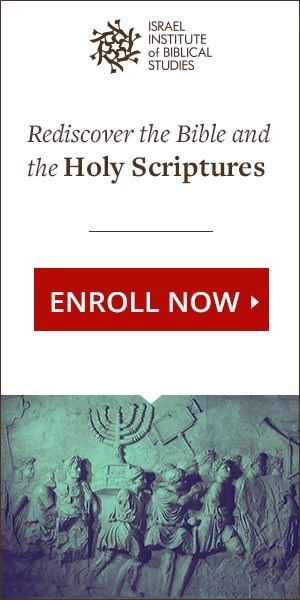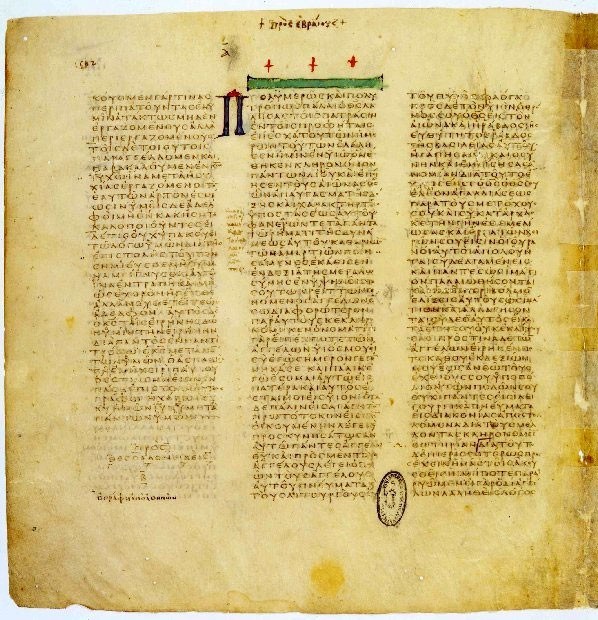
If you have ever read the Bible, you’ve most likely read it in your native tongue. The Bible has been translated in full into almost 700 languages and portions of the Bible have been translated into thousands more. But what is the original language of the Bible?
Ancient Biblical Texts
The Bible was not written all at once as a single, cohesive text, like a novel would be. It was also not written by a single person. The Bible is made up of multiple books, containing history, letters, songs, poetry, parables, stories, etc. that were written across a range of centuries and in such languages as Hebrew, Aramaic or Greek.
If you want to learn Biblical Hebrew, read here my review on this topic.
Here you can read another review about how you can learn Biblical Aramaic online.
Interested in learning Biblical Greek? Read here my review on this topic.
It is hard to tell what Bible manuscripts are the “original” versions of the books found in the Bible. They have been copied and recopied, translated and retranslated, many times over the centuries. The books of the Bible also existed separately for many centuries before they were compiled together into the book we know today. This means that, even if we had a manuscript that could be considered an “original” Bible, it may not be made up of the original versions of all the books it contains.
The oldest Bible manuscripts we have found to date are part of a collection of manuscripts called The Dead Sea Scrolls, named for where they were discovered. The manuscripts found contain at least partial versions of every book from the Old Testament, with the exception of the Book of Esther. The scrolls have been dated between 150 B.C. and 70 A.D., nowhere near the original time of writing for many of the books.
These are still the oldest Bible manuscripts we have found, however, as before the discovery of The Dead Sea Scrolls, the oldest Hebrew manuscripts we had were The Aleppo Codex (written around 920 A.D.) and The Leningrad Codex (written around 1000 A.D.), while the oldest known manuscripts were written in Greek around the 4th century A.D. As you can see, The Dead Sea Scrolls are much older than these collections of manuscripts. The Dead Sea Scrolls are written mainly in a mixture of Hebrew, Aramaic, and Greek, with a few other languages found here and there.
 The Hebrew Bible
The Hebrew Bible
The “original Bible”, the Hebrew Bible, contained 24 books. These books are organized into three sections: The Torah (“Teaching”), the Nevi’im (“Prophets”), and the Ketuvim (“Writings”). This version of the Bible is also called The Tanakh, which is a word made up of the letters from each of the three sections.
Christians will recognize the texts of the Hebrew Bible as the Old Testament. The oldest books in the Bible are found in the Old Testament. These books were written in hebrew within a wide range of dates: between 1400 and 165 B.C. They may also have existed in the oral tradition before this.
The exact writing dates of all the books in the Old Testament are not known, but it is generally thought that the some of oldest books are the Book of Job (written sometime around 1200 B.C.), the Book of Genesis (written around 1400 B.C.), and the Book of Exodus (also written around 1400 B.C.). Notice that the age of the books does not correlate to the placement the books are found in the Bible: The Book of Job is the 18th book in the Old Testament, for example.
The oldest copy of the Tanakh (the Hebrew Bible) is from the 10th century A.D. and the oldest version of the complete Bible, the Codex Amiatinus, is from the 8th century A.D. The canonization of the Hebrew Bible was a very long process, with the Hebrew Bible being canonized throughout the 1st and 2nd centuries B.C. as well as the 1st and 2nd centuries A.D. Before this, there were a wide variety of texts. After this, the Hebrew Bible contained the 24 books we now recognize as the Tanakh.
The New Testament
The New Testament is a much newer text compared to the Old Testament. These were written in the 1st century A.D., between roughly 50 A.D. and 100 A.D. As with the Old Testament stories, many of these could have existed closer to the beginning of the 1st century A.D. in an oral tradition, being passed between people as stories that were then written down at a later date.
The New Testament had many canonized versions before we got to the versions we have today. One such version was the Muratorian Canon, from around 170 A.D. This had a list of all of the books we know today with the exception of Hebrews, James, and 3 John. Later, the Council of Laodicea decided in 363 A.D. that the Old Testament, one book from the Apocrypha, and 26 New Testament books were what made up the canonized Bible.
This version of the New Testament contained everything we know today with the exception of Revelation. Other councils agreed with the version of the canonized Bible, though obviously Revelation was added in later and modern versions of the Bible are typically free of apocryphal texts.
The Oldest Complete Bibles

The age of the oldest individual books in the Bible varies widely but the oldest copy of the complete Bible as we know it today is from the 4th century A.D. It is called the Codex Vaticanus and is currently being kept in the Vatican Library. This manuscript contains both the Old and New Testaments and it is written in Greek.
The Septuagint is a highly important version of the Bible. This is the oldest known version of the Old Testament that was translated into Greek from the original Hebrew scriptures. The first five books (known as the Torah) were translated around the 3rd century B.C. while the rest of the books were translated around the 2nd century B.C. The Septuagint is so important because it is closer to the original source than other versions of the Bible, which were often translations of other translations.
The name “Septuagint” means “The Seventy”. It is called this because of a story surrounding the creation of the Greek translation. 70 Jewish scholars were asked to translate the Hebrew Bible. They all worked independently and ended up producing identical translations. This was seen as a miracle and is the reason The Septuagint was held in such high regard by both Jews and early Christians.
 Who Wrote the Bible?
Who Wrote the Bible?
It is hard to say for certain who actually wrote each individual book in the Bible, though we do have some idea. It is believed that the books in the Bible were written by at least 40 different people, with some books having several authors.
The prophet Moses is generally considered to be the author of the first five books of the Old Testament, while David is considered to be the author of Psalms, though there is evidence that some of the psalms were written by others. In the New Testament, Luke (a follower of the apostle Paul) wrote both Luke and Acts. Matthew is usually said to be written by a tax collector, named either Matthew or Levi, but scholars think that it was actually written by somebody else.
Whoever actually wrote the individual books of the Bible, both Christians and Jews consider them all to be divinely inspired and essentially penned by God himself, through his prophets.
The Original Language of the Bible
There is not one original language of the Bible. The original languages of the books found in the Bible, both the Old and New Testaments, are Hebrew, Aramaic, and Greek.
In the Bible, Hebrew is referred to as the “language of Canaan” and the “Jews’ language”. This is the language that many Jews prefer to read the Hebrew Bible in today, regardless of the original language of each of the books. The interesting thing about Old Hebrew is that it was once written entirely without vowels or other symbols to indicate vowels.
Additionally, all verbs, adjectives, and nouns contain only three consonants. This means that there is some ambiguity about the direct translation of these texts. As Hebrew became spoken less and less, later copies of the Hebrew Bible were written with vowels to make them easier to read for those who did not use Hebrew outside of the reading the Hebrew Bible. The books that were originally written in Hebrew also contain a lot of metaphors and other figures of speech, which can further make direct translations difficult.
Another original language of the Bible is Aramaic, a language that is related to Hebrew. While Hebrew was the sacred language of the Jews, Aramaic was a language used for regular conversation and writing after the 6th century B.C. Examples of Aramaic found in Biblical texts can be seen in old manuscripts of the books of Ezra, Jeremiah, Daniel, and Genesis, though these are often only singular words or phrases found amongst Hebrew text. Some Aramaic manuscripts date back to as early as the 5th century B.C. You can also see examples of Aramaic phrases being transliterated into Greek versions of the Bible.
That leads us to the third original language of the Bible, Greek. Many of the New Testament books were originally composed in Greek due to the fact that Greek was a common or universal language during the period the New Testament was written. People from Rome to Jerusalem spoke and wrote in Greek. The books were written in a combination of Classical Greek and more localized vernaculars, giving the Greek books of the Bible a unique flare.
Other languages can also be seen in the original versions of the Bible as well, mainly due to loan words entering in Hebrew, Aramaic, or Greek. One example of this would be Egyptian loan words that are found in Aramaic texts.
Translations of the Bible
Some people may be surprised to find that there are many different modern versions of the Bible, even within the same language. Not all versions of the Bible contain the same books or even all the same material from those books.

One of the most well-known versions of the Bible in English is the King James translation. This is a version of the Bible that was originally translated for the Church of England and was sponsored by King James VI. It was originally published in 1611. Today, over 50% of people in the United States read the King James Bible. Just under 20% read the New International Version of the Bible. This is a version of the Bible originally published in 1978. This is a modern translation that used the earliest high-quality Biblical manuscripts. This Bible was also translated into more modern English than the King James Bible.
Translating the Bible is not without issue. As stated, original Biblical texts contain a lot of metaphors, similes, personification, etc. This figurative language can especially be found in Hebrew texts. One of the main issues with reading translations of the Bible can be because of this figurative language. How do you properly translate this language? How do you know what should be taken literally and what is more metaphorical?
There are many different types of figurative language found in the Bible. One such type would be simile. This can be seen in the New Testament when Jesus said his disciples should be “wise as snakes” and also when Luke says that Jesus’ sweat “was as it were great drops of blood”. Neither of these things is meant to be taken literally, though the latter phrase is sometimes taken literally to mean that Jesus was sweating blood.
Another kind of figurative language seen in the Bible is euphemism. A very well-known example of this can be seen when the Virgin Mary says to the Angel Gabriel that she has not “known” a man. This is a more polite way of saying that she has not had sexual relations with a man, not literally saying that she does not know any men.
Proverbs are also found in the Bible. These can be extremely hard to translate while retaining the original meaning unless a similar proverb exists in the language the texts are being translated into. One example would be “A man reaps what he sows” from Galatians. This means that the choices you make determine what you get out of life.
This particular proverb is often taken out of context to mean that you get what you deserve or that you are guaranteed something based on what you give. In some Christian churches, both ancient and modern, this idea lends itself to people giving money to their church, with the idea that this will lead to blessings or good fortune.
Languages of the Bible
The Bible was written across centuries, by many different people, in various languages. It has since been translated multiple times, both from the original source texts and from other translations. Whatever you may believe, you cannot deny that the Bible is an interesting look at how language and culture change across time.